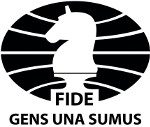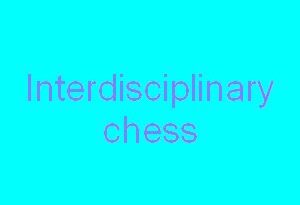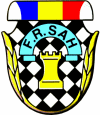What is encoding
Why is it important for teachers to understand encoding theory?

Often, we think we have explored all the critical candidate moves only to discover that our opponent made an excellent move we did ‘t even see. How does this happen?
As opponents discuss their games in the skittles room, we frequently hear comments like “I didn’t see this move coming.” “Where did this knight come from? All chess players have blind spots, things they do not see. As William Lombardy once stated to me: “nobody sees everything.”
Chess is too complex a game to see everything. Even computers have blind spots; these vary based on the program. Otherwise, no computer would ever beat another computer. All games would be a draw, or the side with the first move would always win because of the extra tempo. However, the blind spots of computers often are so minuscule that, for most humans, they are undetectable.
High-rated players have learned to navigate around their blind spots, thereby minimizing the impact that blind spots have on their game. These players have learned to build on their strengths, often choosing openings designed to steer the game away from their blind spots toward their strengths.
Selective encoding—the key to our chess strengths and weaknesses
Just like we cannot see everything on a chessboard, we cannot encode everything; it would overload our brains. It would be like thousands of cars driving randomly on a vast, paved lot without markings or signs. Chaos would result. Consequently, our bodies have the equivalent of road signs; many are biologically based and function automatically unless a certain threshold is reached.
For example, you are unconscious of your breathing until you get a certain level of exertion. At that point, a threshold is reached, and we become aware of our breathing. We must consciously pay attention to our breathing if we want to change our breathing pattern. Many exercise programs are designed to teach us more effective breathing patterns to improve our performance.
In chess, as in exercise, what aspects we attend to will be encoded, while the rest will be ignored or forgotten. Thus, what we choose to attend or not attend determines our strengths and weaknesses. The attributes of a position we attend to are encoded, while the parts we do not attend to are ignored. Over time, we correct and build on our prior encoded knowledge base, deepening our understanding of the game. Chess teachers can expedite this process by helping students identify problem areas, discussing tactical patterns, and strategic decision-making.
Causes of variation in chess strengths and weaknesses
Most people assume that everyone encodes information the same way they do. Consequently, they tend to focus more on those areas they find difficult; this, however, creates a problem because their students may have different encoding preferences. Generally, people are able to adapt to small misalignment of encoding differences, but if the differences go beyond a certain threshold, they have difficulties accurately encoding the information.
If, however, there is a large gap between how the materials are presented and the students’ encoding preferences, faulty or partial encoding may result. This may be especially true for neurodiverse students who use different methods of encoding, storing, or retrieving information.[i] Thus, what a person chooses to encode or not encode determines their sensitivity or insensitivity to certain stimuli.
To summarize, we store information in our brains differently based on our cognitive strengths and weakness, our preferences, or our cultural/societal values. These differences in encoding determine what we attend to (and not attend to), in a given position on the board. In short, these differences determine how we define the problem and the solution path we choose to follow.
Once we define a solution path, we become blind to alternatives. Our minds shut out other information and focus our mental energy on the chosen problem-solving approach. Over time, problem-solving patterns develop, and we tend to follow these patterns unless they are blocked. For example, an unexpected knight fork can drastically alter our perception. We now have become aware of something to which we were previously blind. Because chess forces us to face our encoding errors, it is an excellent tool to teach effective encoding skills that are transferrable across domains.
Important implications for teaching
The better the matchup between the encoding system used by the instructor and the encoding system used by the learner so more likely learning occurs. This challenge can be addressed by using different teaching strategies and adapting the curriculum to the various needs of the students. Chess, as a discipline, may be especially attractive to neurodiverse students, as it allows access to information through different cognitive encoding patterns. Furthermore, it has a natural feedback system that enables the learner to reevaluate the encoded information and revise it based on new data.
Major take-away
When we learn something new, it requires a lot of mental energy to encode the information accurately. If, in addition, we must also exert energy to translate one way of encoding (that of the teacher) to another (one natural to us), our cognitive processing system quickly overloads and consequently freezes; this is similar to a computer that freezes. Everything stops, and information is lost or mislearned.
Thus, to help students learn most effectively, it is beneficial to understand the different ways people encode information, the benefits, and liabilities of each method, and how our way of encoding both determines what we recall easily and our blind spots. In chess, we often speak of different types of players; for example, those who focus on tactical advantages and those who are more focused on strategic opportunities; Tal vs. Petrosian. The key to understanding these differences is how they encode the information while studying chess.
In the book “Chess Openings for Black Explained: A Complete Repertoire,” the authors separate famous chess players into two groups with different encoding preferences. Those with a healthy disrespect for material and those with a healthy respect for the material. Often Tal is called the Magian because of his unexpected sacrifices. One potential reason is that most chess players habitually encode the position based on piece value.
An analysis of Tal’s games indicates that he may have encoded information based on conceptual components such as time, space advantage, piece activity, etc. Sacking a piece for any of these reasons was not a difficult decision at all. For his opponent, this often created a serious cognitive overload problem because now they had to think totally differently than they were used to. This is supported by the following quote by Botvinnik. ” Even when it was not in the spirit of the position, Tal would all aim for open play. He would go in for difficult positions, merely in order to obtain great mobility for his pieces, when his unique ability to calculate variations might tell, as well as… The opponents lack of time for thought.” (Botvinnik, p. 9.[ii])
Naturally, to be successful in chess, these players had to learn to encode information both ways and to know, based on the position on the board, which encoded chunks to recall. Encoding materials in multiple ways and purposefully connecting these chunks maximizes learning. This will be discussed in more detail in subsequent blogs.
Renate Otterbach
This post is the second part of her Develop learning to learn strategies through chess series.
[i] This threshold varies by person. The encoding process of neurodiverse people, such as people with autism, dyslexia, ADHD, and giftedness are normally outside the threshold of neurotypical people. For some people, it may be surprising that giftedness is include in the list. However, Eva Gyarmathy, who has extensively studied neurodiversity includes giftedness. Furthermore, student who are both autistic and gifted, or dyslexic and gifted are labeled twice exceptional. It is also not uncommon to have gifted students who have ADHD. All these factors indicate that there might exists commonality among these differences. Furthermore, none of these students thrive under normal classroom instruction. This will be explored further in a future blog.
[ii] Botvinnik – Return Match for the World Chess Championship Botvinnik -Tal Moscow 1961 (2004) Edition OLMS.


